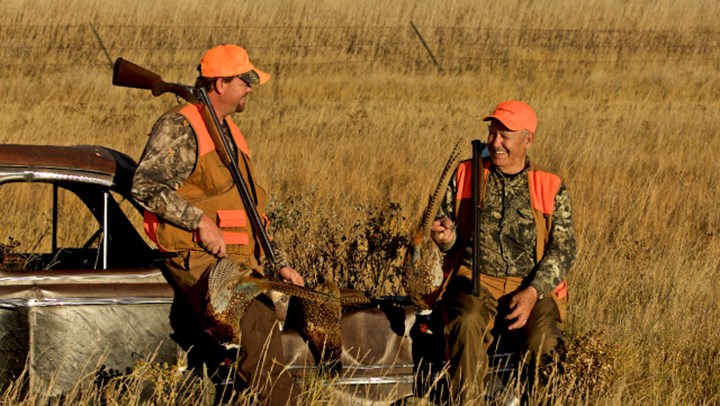
by Bruce Ingram - Wednesday, December 13, 2017

One major action that landowners in the United States can take to ensure the protection of our cherished hunting heritage is place their property under a conservation easement. I know this because I have put 432 acres from three different properties under conservation easements in Craig County, Va.
My wife and I originally bought the land so I would have a place to hunt and pass on to our children and future grandchildren. It was only after our first few land purchases that we discovered the benefits of conservation easements, which are voluntary, permanent agreements between landowners and a land trust that protects lands for future generations by ensuring they are never developed.
Meagan Cupka, assistant director for the Blue Ridge Land Conservancy, emphasizes that state, regional and local land trusts are eager to work with hunt clubs and individual sportsmen who own property. “Conservation easements can absolutely play a role in protecting the future of hunting,” Cupka said. “They are designed to protect land where wild animals can live and thrive. Open space is essential for healthy ecosystems, and hunting can certainly be part of keeping an ecosystem healthy.”
Hunters may be surprised to learn that hunting is often a value associated with conservation easements as well as to the things that sportsmen often do to develop wildlife habitat, such as creating clear cuts, working on timber stand improvement projects and planting food plots. All are allowed under conservation easements along with standard agricultural processes.
What a landowner—including all future landowners of a property under easement—cannot do after entering into a conservation easement agreement with a land trust is turn a property into a subdivision or allow more development than was originally agreed to in the easement. For example, our first easement was for 272 acres on the top of Potts Mountain in Craig County. As part of the legal agreement, I signed a contract stating that no more than two houses could ever be built on the property.
How to Begin the Process
Cupka says the first step in putting land into a conservation easement is for interested landowners to contact their local, regional or state land trust and complete an application. Land trust staff then will visit the property with the landowner and discuss how an easement can fulfill the owner’s goals for the land and protect the land’s conservation values such as forests, watersheds and scenic views. This will lead to a preliminary agreement between the trust and the landowner. It is at this point that landowners will typically hire a lawyer, as conservation easements are legal agreements. The lawyer and land trust will review the agreement to make sure it meets the needs of all parties.
Eventually, landowners also will have to hire a certified general appraiser. Because conservation easements take away certain development rights, a property becomes less valuable in terms of its taxability to various government entities. An appraiser will determine just how much the value has decreased, which typically leads to federal tax deductions and state tax credits. I have received thousands of dollars in tax deductions and credits over the years, enabling me to buy other rural properties and place them under easements, ultimately leading to more tax deductions and credits. My annual tax burden for each of my three properties has been reduced 20 percent due to placing them under conservation easements.
This past year, I placed our 30-acre property in Johns Creek Valley under a conservation easement. I killed a deer there on opening day of Virginia’s archery season and another on the opening day of the firearm season. My wife and I find great reassurance that our family and future family members can experience the same joy on that land.
Simply stated, conservation easements help protect the rural way of life, of which hunting is very much a part.
E-mail your comments/questions about this site to:
[email protected]
Proudly supported by The NRA Foundation and Friends of NRA fundraising.
